Wyoming is in the Rocky Mountain section of the Western United States. This state, mainly rural, is home to only half a million people, with few large cities with strong economies.
Keep reading to discover the largest cities in Wyoming, ranked by population, total area, and economic impact.
Largest Cities in Wyoming by Population
Wyoming is only the least populated state in the country, with over 580,000 inhabitants. Its largest cities are relatively small compared to other states.
| Rank | City | Population (2020) |
|---|---|---|
| 1 | Cheyenne | 65,132 |
| 2 | Casper | 59,038 |
| 3 | Gillette | 33,403 |
| 4 | Laramie | 31,407 |
| 5 | Rock Springs | 23,526 |
Cheyenne
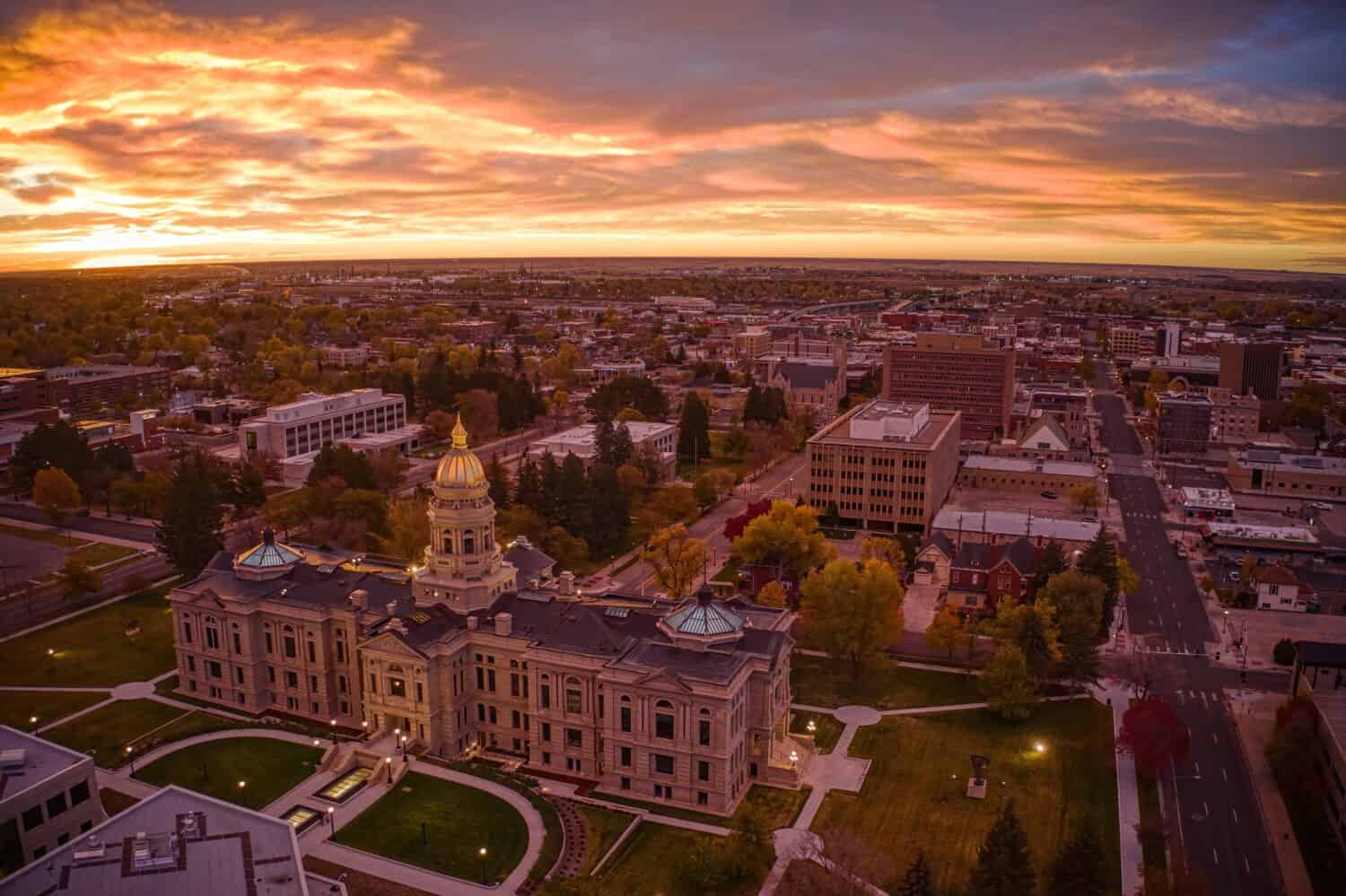
In 1867, local residents named the town after the Cheyenne Native American people.
©Jacob Boomsma/Shutterstock.com
Cheyenne, Wyoming’s capital and largest city, is also the state’s most populated. This vibrant and historically rich community is in the southeastern part of the state near the Colorado and Nebraska borders.
As of the 2020 United States Census, Cheyenne had a population of approximately 65,132 residents. The city’s population increased by 9.5% between 2010 and 2022. With a large land area, Cheyenne has a moderate to low population density of 1,9991.23/sq mi. This leaves ample space for the residents in the different neighborhoods.
While Cheyenne is not a large city by national standards, it plays a significant role in the state’s culture, economy, and government. Its population exhibits an aging trend, with a growing proportion of elderly residents. However, several educational institutions and the F.E. Warren Air Force Base bring many younger individuals to the city.
Casper

Casper earned the nickname “The Oil City” for its long history as an oil boomtown.
©Jacob Boomsma/Shutterstock.com
The second largest city by population in Wyoming, Casper is in the central part of the state, along the North Platte River. It serves as a regional hub for commerce, industry, and culture in the region.
According to the 2020 census, Casper’s population is 59,038 inhabitants. Like Cheyenne, its population increased during the 2010-2020 period, increasing by 6.7%. Casper’s density is 2,182.21/sq mi, a moderate number that offers ample space to its inhabitants.
A significant part of Casper’s population is middle-aged or older. However, Casper College, a community college with over 4,000 students, attracts younger people to the city.
Gillette

Between 2000 and 2010, Gillette’s population increased by 48%. This was a result of a boom in its local fossil fuel industries.
©RaksyBH/Shutterstock.com
Gillette, the third-largest city by population, is in Campbell County, Northwest Wyoming. The town is primarily known for its connection to the coal mining industry.
The city of Gillette, in 2020, had a population of 33,403 residents. Gillette had a substantial population increase between 2010 and 2020, with 14.8%. Its population density is relatively low at 1,384.66/sq mi, making it a great place to live with ample space for its residents.
Like other cities in Wyoming, Gillette has an aging population. Many young residents move for educational and career opportunities after high school.
Laramie
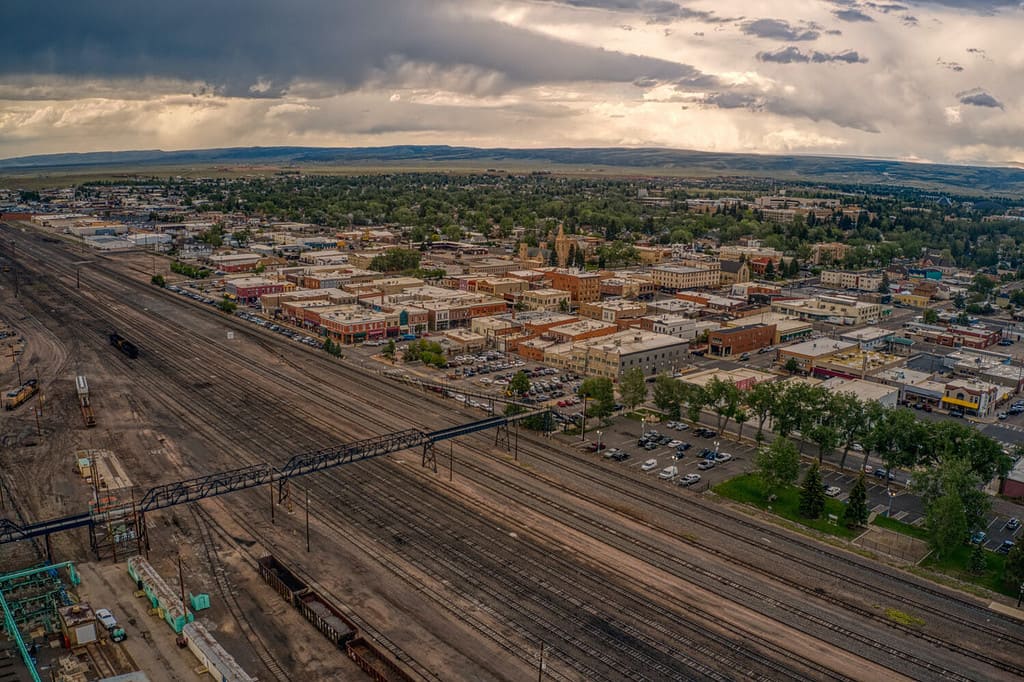
Laramie is home to the University of Wyoming, the biggest institution in the state.
©Jacob Boomsma/Shutterstock.com
The fourth-largest city by population, Laramie, is in the state’s southeastern part, close to the Colorado border. This charming historic city offers endless picturesque landscapes and outdoor recreation opportunities.
Laramie’s population, as of the 2020 census, is 31,407. Contrary to Cheyenne, Casper, and Gillette, the city of Laramie does not reflect steady population growth. Over ten years, from 2010 to 2020, its population only gained 1.9%. Laramie has a small population density of 1,781.74/sq mi. It varies within different areas in the city. This lower population density aligns with Wyoming’s overall character as a sparsely populated state with vast open spaces.
Laramie does not suffer from a severe aging population, unlike the preceding cities. The city’s economy is diverse, with various sectors that attract a lot of young workers.
Additionally, Laramie is home to the University of Wyoming and welcomes approximately 11,000 undergraduate and graduate students in Laramie. The student population makes up 35% of the city’s population.
Rock Springs
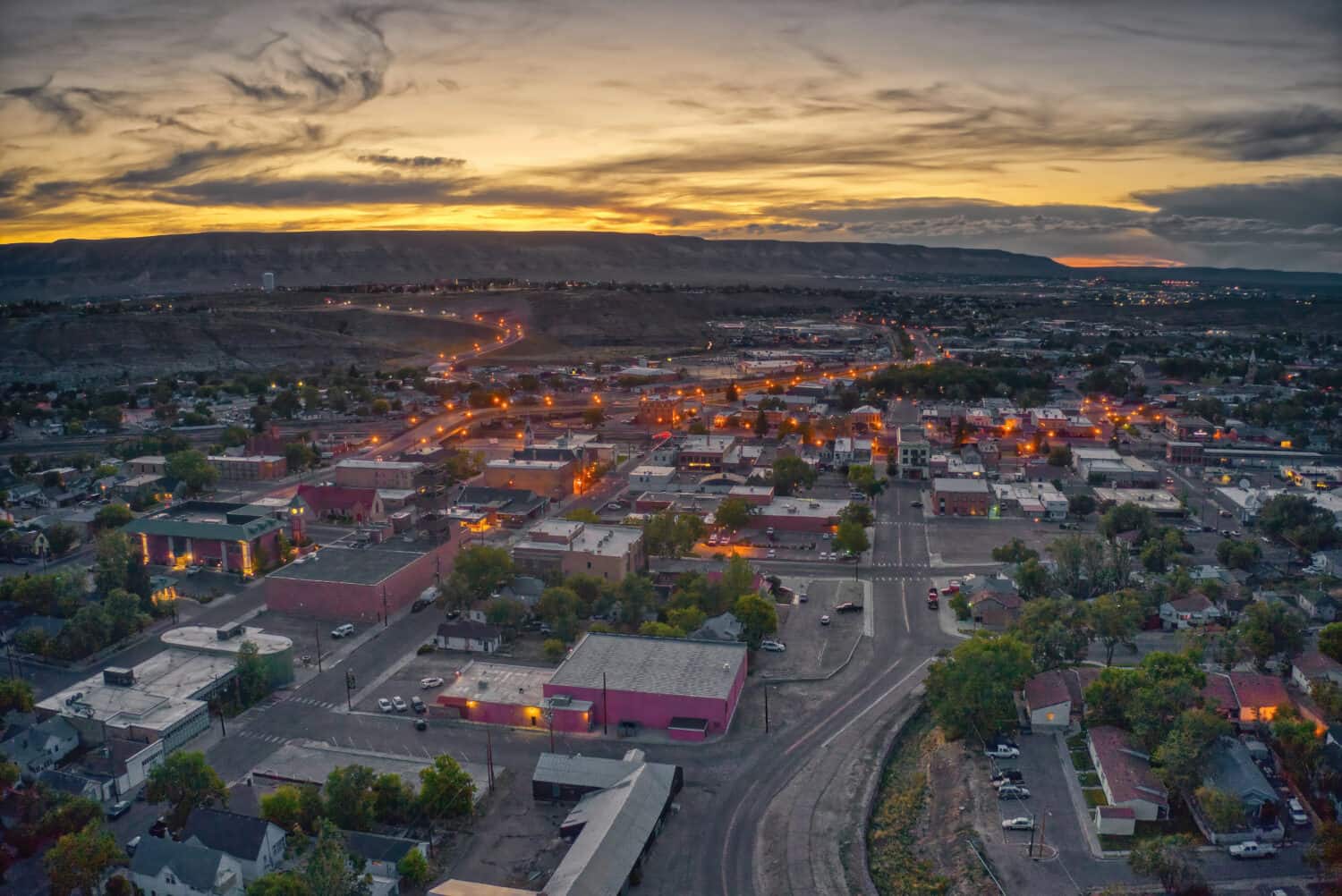
Locals call Rock Springs the 57 Variety Town due to its inhabitants of many nationalities.
©Jacob Boomsma/Shutterstock.com
Rock Springs, the fifth-largest city by population, is in Sweetwater County, in the southwestern part of Wyoming, close to Utah and Colorado borders.
As of the 2020 censure, Rock Springs had approximately 23,526 inhabitants. Like Laramie, the city experienced a slow population increase, with a gain of 2.1% between 2010 and 2020. Rock Springs has a low density, with 1,146.81/sq mi, highly contributing to the quality of life.
Rock Springs experiences an aging population like most of the cities in Wyoming. However, thanks to its economy tied to the energy industry (coal mining and natural gas production), the city manages to bring younger professionals. Additionally, Rock Springs is home to Western Wyoming Community College. This attracts over 2,000 students to the town.
Largest Cities in Wyoming by Total Area
Wyoming ranks as the 10th biggest state in the country. But unlike the state, its cities have relatively small land area.
| Rank | City | Total Area (Square Miles) |
|---|---|---|
| 1 | Casper | 26.9 |
| 2 | Cheyenne | 24.5 |
| 3 | Rock Springs | 19.3 |
| 4 | Gillette | 19 |
Casper

The name Casper came from Fort Casper, which was named after Lt. Caspar Collins. However, the Army misspelled his name as Casper.
©Jacob Boomsma/Shutterstock.com
Casper, the second-largest city by population, grabs the first place in total area with 26.9 square miles (69.7 square kilometers). The city is famous for its unique geographic features, climate, and notable natural attractions, making it a fascinating place to visit and live.
The city experiences a semi-arid climate with distinct seasons. Winters are cold and snowy, with average temperatures in the 20s and 30s °F (-6 to 2°C). Summers in Casper are warm and pleasant, with temperatures often reaching the 80s and 90s °F (27 to 37°C). Spring and fall offer crisp and cool weather, with highs in the 50s and 60s Fahrenheit (10 to 20°C). In the fall, the foliage in the area turns vibrant shades of red, orange, and yellow.
Natural Attractions
Casper is in the High Plains region of Wyoming, characterized by vast, open landscapes and rolling hills. The city’s location on the eastern edge of the Rocky Mountains gives it a unique blend of mountainous terrain and high desert plains.
Plus, the city is along the North Platte River, which flows through the city and adds to its scenic beauty. The river offers recreational opportunities such as fishing, kayaking, and rafting. Alcova Reservoir is a popular spot for boating, fishing, and camping.
Independence Rock is a historic landmark on the Oregon Trail located southwest of Casper. It’s a massive granite rock formation that pioneers used as a landmark on their westward journey during the 19th century.
South of the city, Casper Mountain provides a striking contrast to the surrounding plains. It offers outdoor enthusiasts a range of activities, including hiking, mountain biking, and skiing in the winter months. For skiing enthusiasts, Hogadon Basin Ski Area on Casper Mountain offers skiing and snowboarding during the winter months.
Cheyenne
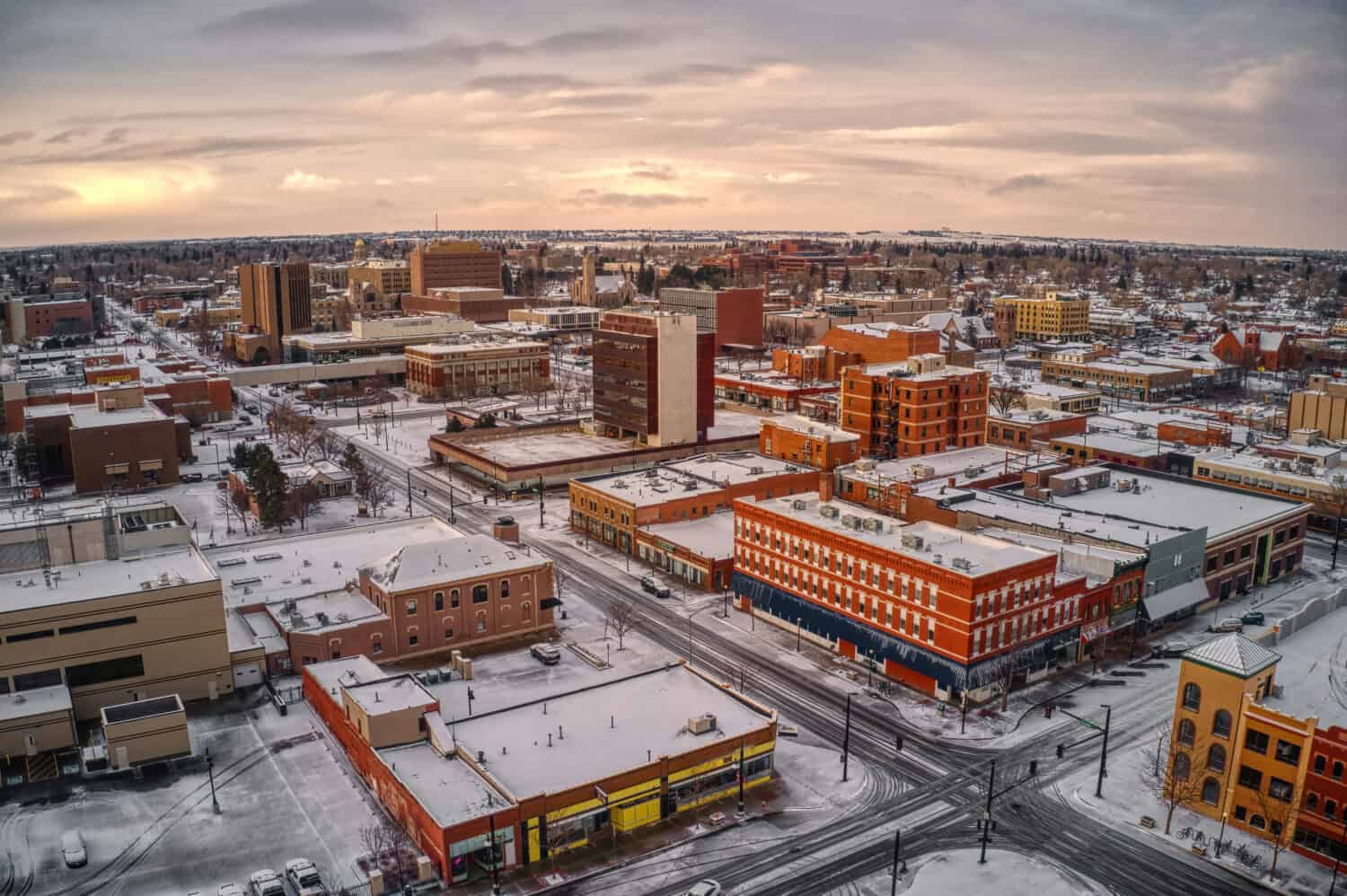
The city’s elevation is approximately 6,062 feet (1,848 meters) above sea level. It is one of the highest state capitals in the United States.
©Jacob Boomsma/Shutterstock.com
The city’s elevation is approximately 6,062 feet (1,848 meters) above sea level. It is one of the highest state capitals in the United States.
With 24.5 square miles of total area (63.5 square kilometers), Cheyenne falls short behind Casper. The city has a rich history, vibrant culture, a unique blend of urban amenities, and Wyoming’s natural beauty.
Winters in Cheyenne are cold and dry, with temperatures often dropping below freezing. Snowfall is expected during winter, and the city enjoys a picturesque snowy landscape. Summers are relatively warm with low humidity. Average high temperatures in the summer months range from the 70s to the 80s °F (around 21-32°C). Spring and fall offer milder and more temperate weather.
Natural Attractions
While Cheyenne is not known for its natural attractions, it is a gateway to many of Wyoming’s stunning outdoor destinations.
Located 30 miles (48.3 kilometers) west of Cheyenne, Curt Gowdy State Park, this state park offers hiking, mountain biking, fishing, and water recreation on the park’s reservoirs. Also west of Cheyenne, the Medicine Bow National Forest is a stunning area offering a range of outdoor activities, including hiking, camping, fishing, and wildlife viewing.
East of Laramie, a short drive from Cheyenne, Vedauwoo Recreation Area is renowned for its unique rock formations, making it a popular spot for rock climbing and hiking.
If willing to do a two-hour drive, northwest of Cheyenne is the Laramie Peak, the highest peak in the Laramie Range. It also offers hiking and breathtaking panoramic views from its summit.
In Cheyenne, visitors can enjoy a rich cultural scene, including historic sites, museums, and annual events like Cheyenne Frontier Days, the world’s largest outdoor rodeo and western celebration.
Rock Springs
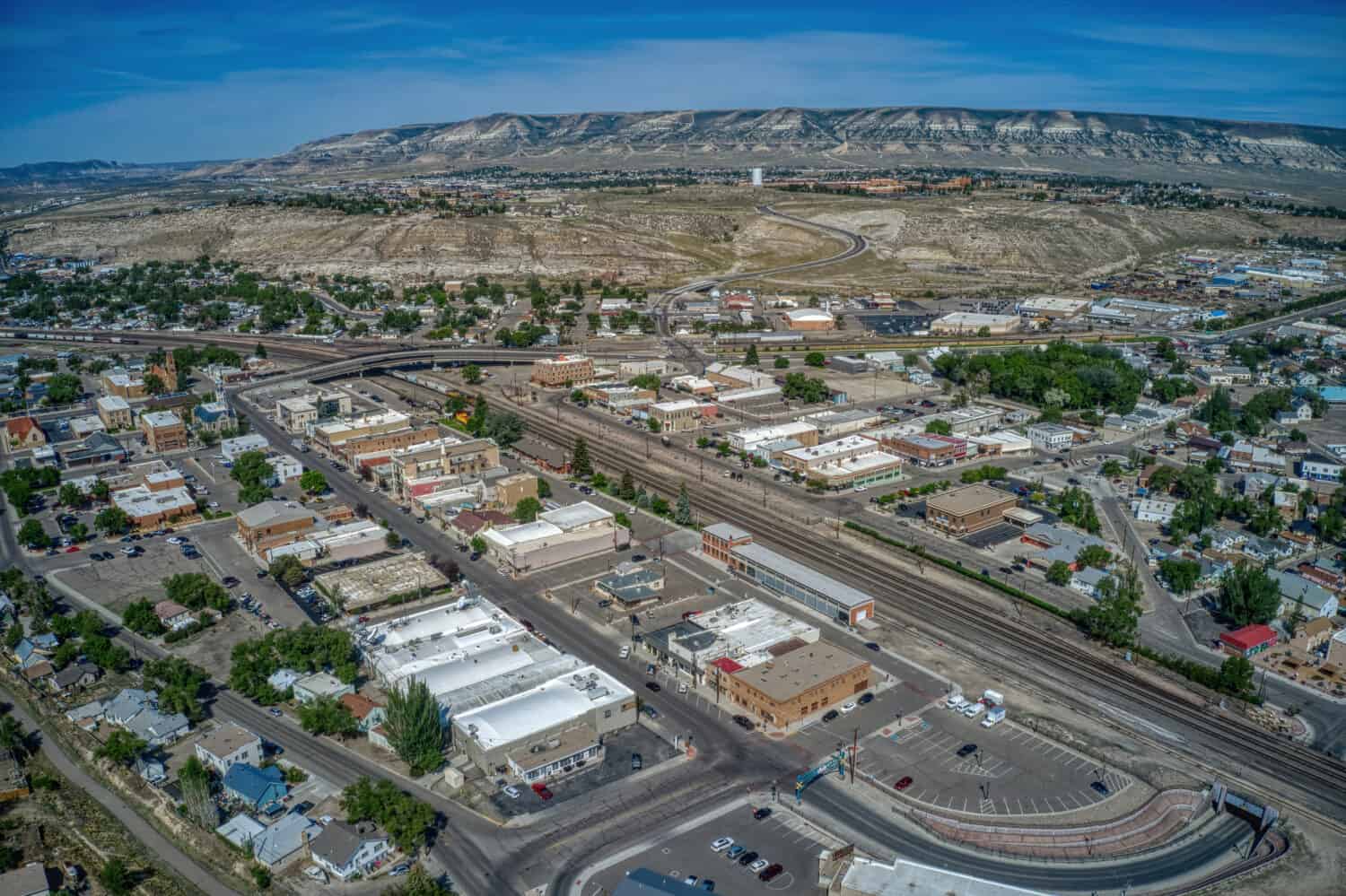
The city is also the fifth-largest by population in Wyoming.
©Jacob Boomsma/Shutterstock.com
Rock Springs, with 19.3 square miles (50 square kilometers), is in the southwestern part of the state. The city is in the high desert region of Wyoming. Vast expanses of sagebrush and arid terrain characterize the surrounding landscape. But it is also along the banks of the Green River. The desert environment contrasts with the lushness of the Green River Valley, creating a diverse and picturesque setting.
Winters in Rock Springs are cold and snowy. Average temperatures often drop below freezing, and snowfall can be significant. Summers are warm and dry, with average high temperatures in the 80s and 90s °C (around 27-37°C). The region enjoys plenty of sunshine during summer, making it an ideal time for outdoor activities. Spring and fall bring milder temperatures, and the changing foliage in the nearby mountains is particularly striking during the fall.
Natural Attractions
The Green River offers recreational opportunities like fishing, boating, and rafting. It is also famous for its scenic beauty as it meanders through the rugged terrain of western Wyoming.
The Seedskadee National Wildlife Refuge, located along the Green River, is a haven for wildlife enthusiasts. It provides habitat for various bird species, including waterfowl and raptors.
Located near Rock Springs, the Flaming Gorge National Recreation Area is a stunning reservoir surrounded by red-rock canyons. It offers opportunities for boating, fishing, camping, and hiking. The vibrant colors of the gorge, especially at sunset, are a stunning sight.
West of Rock Springs, the Killpecker Sand Dunes cover an extensive area. These dunes are popular destinations for off-roading and sandboarding.
Gillette
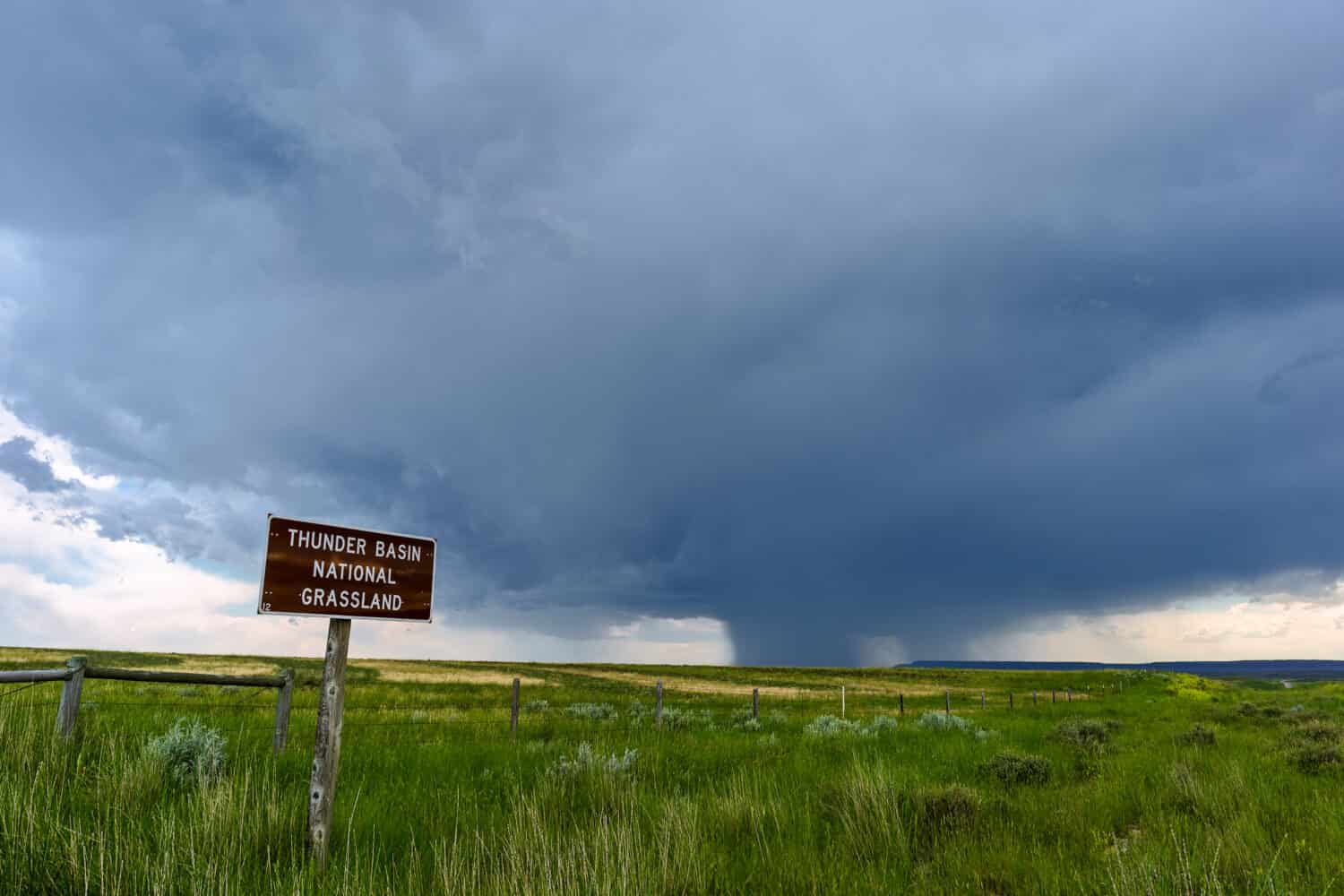
The Thunder Basin National Grassland is a hidden gem in Wyoming.
©John D Sirlin/Shutterstock.com
Gillette and its 19 square miles (49.2 square kilometers) is Wyoming’s fourth-largest city by total area. Located in the Powder River Basin, a large sedimentary basin with extensive coal deposits. The city is surrounded by rolling prairies and is also part of the High Plains region of the United States.
While open plains and gently rolling hills predominantly characterize the area around Gillette, the presence of the Powder River Basin played a significant role in the local economy, as it contains valuable coal reserves.
The city experiences a semi-arid climate with distinct seasonal variations. Winters in Gillette are cold and can be pretty harsh. Sub-freezing temperatures and snowfall are expected during the winter months. Summers are generally warm and pleasant. Daytime temperatures in the summer months can range from the 70s to the 90s °F (20s to 30s °C). Gillette receives relatively low annual precipitation, typical of many areas in the High Plains. In summer, occasional thunderstorms can happen.
Natural Attractions
Located 35 miles (56.3 kilometers) southwest of Gillette, Keyhole State Park offers a picturesque reservoir surrounded by red sandstone cliffs. It’s a popular spot for boating, fishing, camping, and wildlife viewing.
Although not in Gillette, Devil’s Tower is a unique geological formation about a two-hour drive to the northeast. It’s a prominent igneous rock column rising dramatically from the surrounding landscape and is a popular destination for climbers and sightseers.
Visitors will also find the scenic Black Hills of South Dakota just east of Gillette. This area boasts beautiful forests, hiking trails, and attractions like Mount Rushmore and Custer State Park, making it an excellent destination for day trips.
Close to Gillette is Thunder Basin National Grassland. This vast area of protected grasslands covers approximately 547,499 acres in northeastern Wyoming. This extensive grassland ecosystem has a unique blend of rolling prairies, sagebrush steppe, and a variety of wildlife habitats. Visitors can explore through scenic drives like the Backcountry Byway and Red Hills Road.
The grassland provides essential habitat for many wildlife species, including pronghorn antelope, mule deer, elk, coyotes, eagles, and numerous bird species. But the area also offers opportunities for outdoor activities such as hiking, birdwatching, wildlife photography, and camping. The site has several designated campgrounds and picnic areas where visitors can enjoy the natural beauty of the grassland
Largest Cities in Wyoming by Economic Impact
| Rank | City | Gross Domestic Product (GDP) in 2021 |
|---|---|---|
| 1 | Casper | 5,888 million |
| 2 | Cheyenne | 5,508 million |
Casper
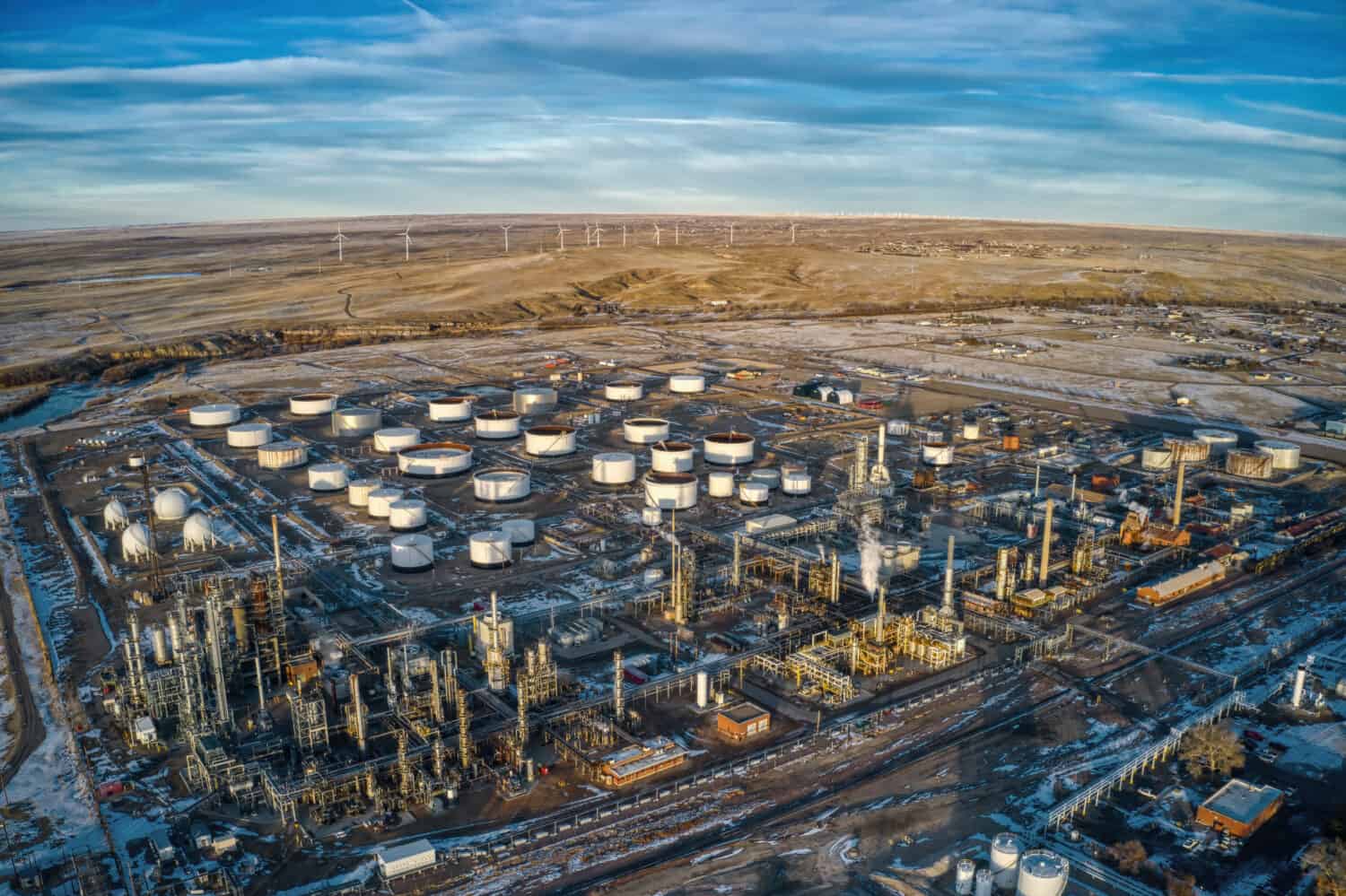
The oil industry is a major driver of Casper’s economy.
©Jacob Boomsma/Shutterstock.com
The city of Casper, only second-largest by population, has the largest GDP in Wyoming. It is a vital economic and cultural hub in the region. Casper offers a unique blend of natural beauty and economic vitality in various sectors.
Energy
Historically, Casper has been closely tied to the energy sector, particularly the oil, natural gas, and coal industries. Wyoming is one of the leading coal-producing states in the U.S., and Casper’s strategic location has made it a center for energy-related activities. The city hosts several energy-related businesses, including exploration, drilling, and support services.
These businesses have a strong presence in Casper and provide employment opportunities in exploration, production, and support services.
Casper’s economy is also sensitive to fluctuations in energy markets. Changes in oil and gas prices and environmental regulations can impact the energy sector and, consequently, the local economy.
Agriculture and Ranching
Agriculture and ranching have long been essential industries in Wyoming, and Casper is no exception. The city serves as a commercial and logistical hub for the agricultural sector, with numerous ranches and farms in the surrounding area. Livestock production, including cattle and sheep, is a significant part of the local economy.
Healthcare
Casper boasts a thriving healthcare sector with several hospitals, clinics, and medical facilities. The Wyoming Medical Center is a prominent healthcare institution in the city, providing residents with a wide range of medical services and serving as a significant employer.
Education
Casper is home to Casper College, a community college that offers various educational programs and is an essential educational institution in the region. The community college is also a significant employer in the city, offering academic and administrative positions.
Other Industries
The retail and hospitality sectors play a vital role in Casper’s economy, with various stores, restaurants, and hotels providing jobs for residents.
Casper’s proximity to outdoor recreational activities in the Rocky Mountains contributes to a growing tourism industry. The city has promoted outdoor events and cultural attractions to attract visitors and boost the local economy.
In recent years, Casper has tried diversifying its economy beyond traditional industries. This includes promoting tourism, outdoor recreation, and educational services to reduce dependence on energy-related sectors.
Cheyenne
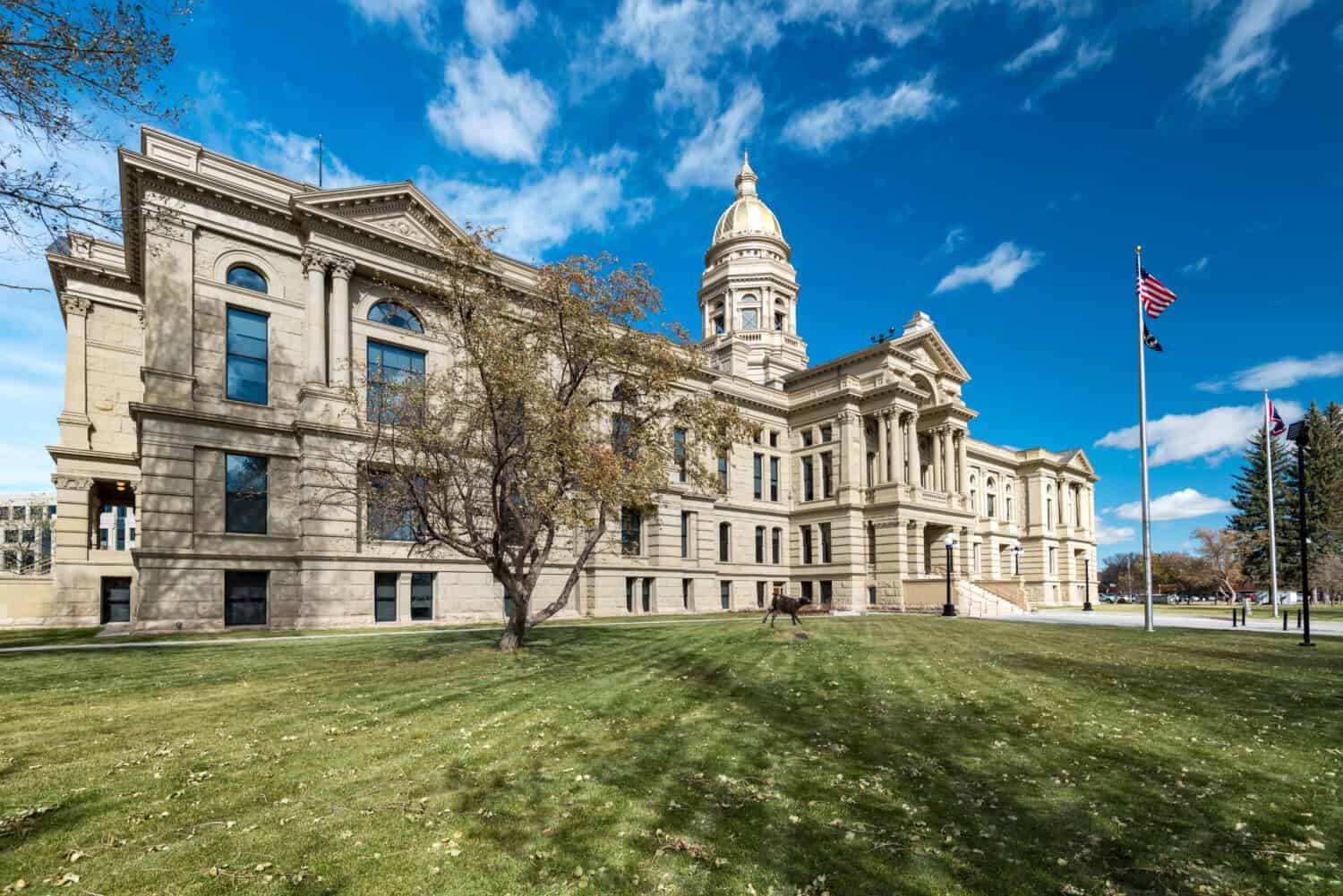
As the state capital, Cheyenne has a lot of government jobs.
©Randy Runtsch/Shutterstock.com
Cheyenne, as the capital and largest city of the state of Wyoming, is only the second city by GDP. But it still serves as an economic, cultural, and governmental hub. The city’s economy is diverse, with sectors such as government, healthcare, education, manufacturing, and transportation playing crucial roles.
Government and Military
The government is a significant driver of Cheyenne’s economy due to its status as the state capital. The city has numerous state and local government offices, including the Wyoming State Capitol. The government is a significant employer in the city.
Additionally, F.E. Warren Air Force Base, a major employer, plays a crucial role in the city’s economy. It is home to the 90th Missile Wing, responsible for managing and maintaining intercontinental ballistic missiles (ICBMs).
Transportation and Logistics
Cheyenne’s strategic location near the crossroads of major interstates (I-25 and I-80) and its proximity to the Union Pacific Railroad made transportation and logistics a significant industry in the area. The city serves as a transportation hub for the region, with warehousing, distribution centers, and trucking companies playing a vital role.
The Union Pacific Railroad, with its large rail yard in Cheyenne, is a significant employer with rail transportation and maintenance jobs.
Energy
Wyoming is known for its vast energy resources, including coal, natural gas, and wind energy. Cheyenne benefits from its location within Wyoming, with energy-related industries, including fossil fuel extraction and renewable energy development, contributing to the local economy.
Healthcare and Education
The healthcare and education sectors are also significant contributors to Cheyenne’s economy. The city is home to the Cheyenne Regional Medical Center, one of the region’s largest healthcare providers and employers. Additionally, the University of Wyoming’s outreach programs and the Laramie County Community College contribute to the education sector.
Thank you for reading! Have some feedback for us? Contact the AZ Animals editorial team.








